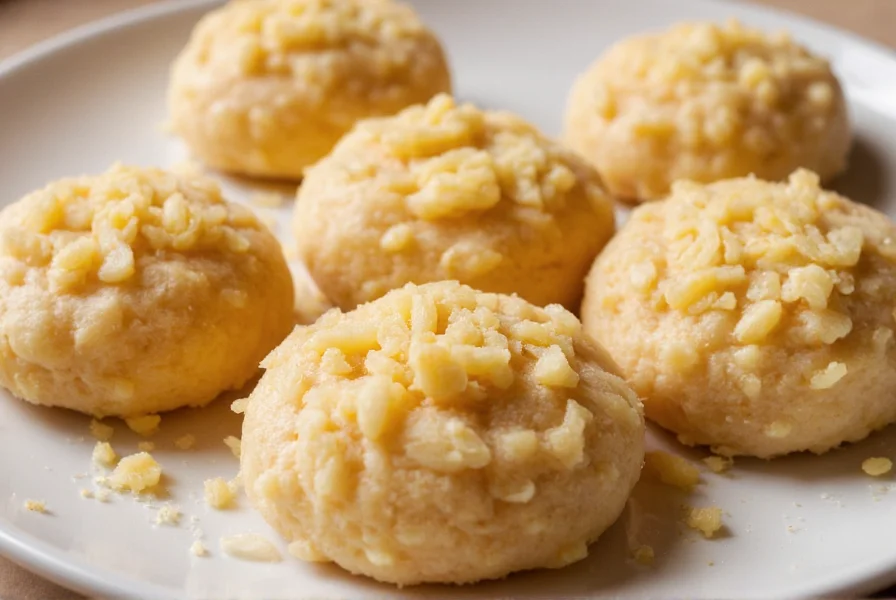Here's the authentic recipe for pizzelles with anise: Combine 3 eggs, 1 cup sugar, 1 cup all-purpose flour, 1/2 cup vegetable oil, 1/4 cup anise seed (or 1 tsp anise extract), and 1 tsp baking powder. Mix until smooth, then refrigerate for 30 minutes. Preheat pizzelle iron, brush with oil, and pour 1-2 tablespoons of batter per cookie. Cook for 30-45 seconds until golden. Cool on a wire rack. This traditional Italian recipe yields approximately 24 delicate, crisp cookies with distinctive anise flavor.
The Art of Making Traditional Pizzelles with Anise
Nothing captures the essence of Italian holiday baking quite like the delicate aroma of anise-infused pizzelles fresh from the iron. These thin, crisp waffle cookies have been a staple in Italian households for generations, with regional variations across the country. The addition of anise creates a distinctive flavor profile that elevates these simple cookies from ordinary to extraordinary.
Why Anise Complements Pizzelles Perfectly
Anise seed, with its sweet licorice-like flavor, has been used in Italian baking for centuries. When incorporated into pizzelle batter, it creates a sophisticated flavor that pairs beautifully with the cookie's delicate texture. The volatile oils in anise release their full aroma during the baking process, creating that unmistakable scent that fills Italian kitchens during festive seasons.
For authentic Italian pizzelles recipe with anise, you'll want to use whole anise seeds rather than extract for the most traditional flavor. The seeds provide subtle texture and bursts of flavor as you bite into the cookie. If you prefer a more uniform anise flavor throughout, anise extract works well too—just use it sparingly as it's more concentrated.
Essential Ingredients for Perfect Anise Pizzelles
| Ingredient | Amount | Notes |
|---|---|---|
| All-purpose flour | 1 cup | Sifted for lighter texture |
| Granulated sugar | 1 cup | Can substitute with caster sugar |
| Eggs | 3 large | Room temperature |
| Vegetable oil | 1/2 cup | Neutral flavor, not olive oil |
| Anise seed | 1/4 cup | Finely ground or whole |
| Baking powder | 1 tsp | Fresh for best rise |
For the best traditional anise-flavored pizzelles, use high-quality ingredients. The anise seed makes all the difference—look for plump, greenish-gray seeds with a strong aroma. If using extract instead of seeds, choose pure anise extract rather than imitation. The quality of your pizzelle iron also matters; a non-stick, adjustable temperature model gives you the most control for achieving that perfect golden color without burning.
Step-by-Step Instructions for Perfect Results
- Prepare the batter: In a large bowl, beat eggs and sugar until light and fluffy (about 3 minutes). Add oil and mix thoroughly.
- Incorporate dry ingredients: Gradually add sifted flour, baking powder, and anise seed (or extract). Mix until just combined—do not overmix.
- Chill the batter: Cover and refrigerate for at least 30 minutes. This allows the flour to hydrate fully and prevents spreading.
- Preheat your pizzelle iron: Set to medium heat (around 350°F/175°C). Lightly brush with oil if your iron isn't non-stick.
- Cook the pizzelles: Drop 1-2 tablespoons of batter in the center of each mold. Close the iron and cook for 30-45 seconds until golden brown.
- Cool properly: Immediately transfer to a wire rack. Do not stack until completely cool to maintain crispness.

Troubleshooting Common Pizzelle Problems
Even experienced bakers encounter issues with pizzelles. Here's how to solve the most common problems when making this classic Italian cookie recipe with anise:
- Sticking to the iron: Ensure your iron is properly preheated and lightly oiled. If using a non-stick iron, avoid spraying cooking oil which can build up residue.
- Burning: Reduce the temperature. Pizzelles cook quickly—30-45 seconds is usually sufficient. Watch carefully during the first few batches to determine your ideal timing.
- Too thick or cakey: You may have overmixed the batter or used too much flour. Measure flour by spooning into the cup and leveling off—don't scoop directly from the bag.
- Lacking anise flavor: If using seeds, try toasting them lightly before grinding. For stronger flavor, increase anise to 1/3 cup or add 1/4 tsp anise extract along with the seeds.
Serving and Storage Recommendations
Traditional anise pizzelles are best enjoyed fresh, but they store well when properly handled. For the authentic Italian pizzelles experience, serve them plain to appreciate the delicate anise flavor. They also pair beautifully with espresso, sweet wines, or as a base for cannoli filling.
Store cooled pizzelles in an airtight container with parchment paper between layers. They'll stay crisp for up to two weeks at room temperature. For longer storage, freeze in a single layer then transfer to freezer bags—they'll keep for up to three months. To refresh, place in a 300°F (150°C) oven for 2-3 minutes.

Variations and Substitutions
While the traditional pizzelles with anise recipe is perfect as written, you might need to adapt it for dietary restrictions or personal preferences:
- Gluten-free: Substitute all-purpose flour with a quality gluten-free flour blend. Add 1/4 tsp xanthan gum if not included in the blend.
- Egg-free: Replace each egg with 1/4 cup unsweetened applesauce plus 1 tsp baking powder for lift.
- Dairy-free: The traditional recipe is naturally dairy-free—just ensure your oil is plant-based.
- Less sweet: Reduce sugar to 3/4 cup without significantly affecting texture.
- Alternative flavors: Try adding lemon zest, vanilla, or almond extract alongside the anise for complexity.
Perfecting Your Pizzelle Technique
Mastering the art of pizzelles with anise takes practice. The first few may not be perfect—that's normal. Watch for the steam to stop as an indicator they're done, rather than relying solely on time. The ideal pizzelle should be golden with a delicate lace pattern, crisp but not brittle.
For the most authentic Italian cookie recipe experience, consider making them with family members. This tradition often brings generations together in the kitchen, sharing stories while creating these delicate treats. The distinctive anise flavor connects modern bakers with centuries of Italian culinary heritage.











 浙公网安备
33010002000092号
浙公网安备
33010002000092号 浙B2-20120091-4
浙B2-20120091-4